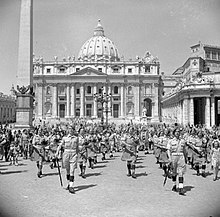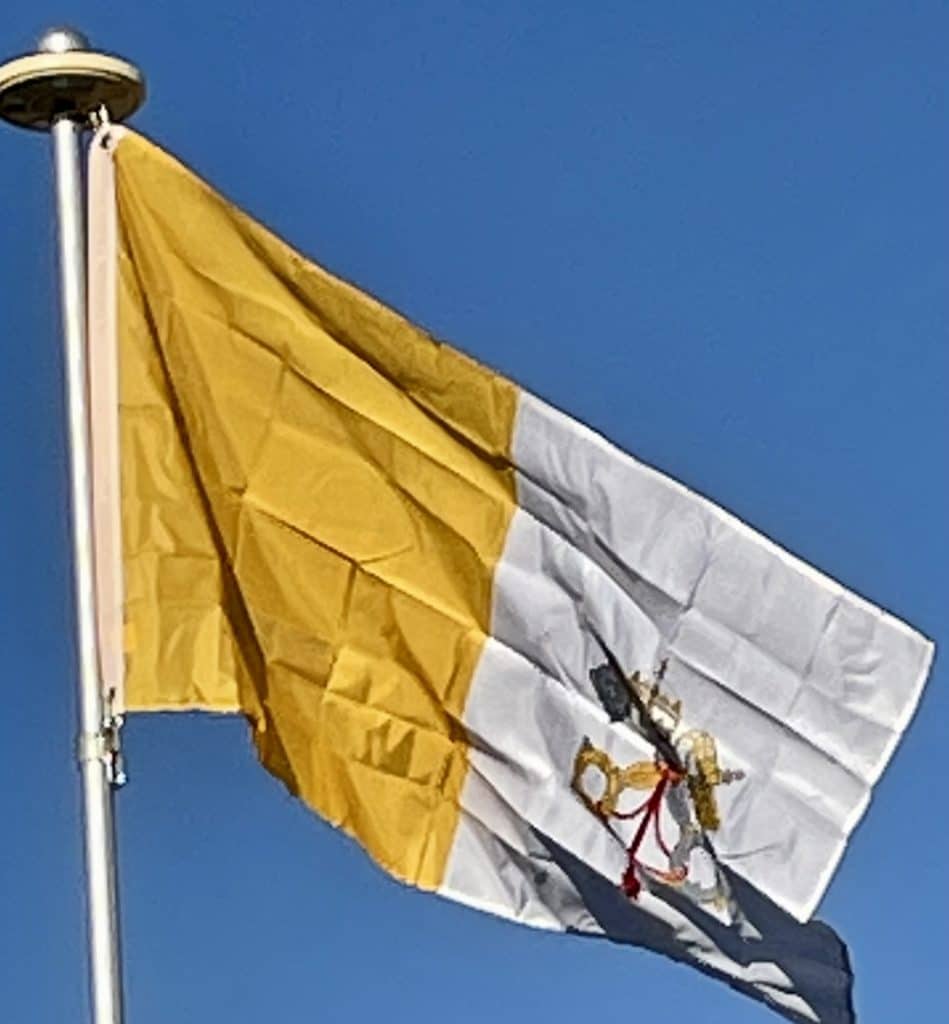Italy made no attempt to interfere with the Holy See within the Vatican walls. However, it confiscated church property in many places. In 1871, the Quirinal Palace was confiscated by the King of Italy and became the royal palace. Thereafter, the popes resided undisturbed within the Vatican walls, and certain papal prerogatives were recognized by the Law of Guarantees, including the right to send and receive ambassadors. But the Popes did not recognize the Italian king’s right to rule in Rome, and they refused to leave the Vatican compound until the dispute was resolved in 1929; Pope Pius IX (1846–1878), the last ruler of the Papal States, was referred to as a “prisoner in the Vatican“. Forced to give up secular power, the popes focused on spiritual issues.
Lateran treaties:
This situation was resolved on 11 February 1929, when the Lateran Treaty between the Holy See and the Kingdom of Italy was signed by Prime Minister and Head of Government Benito Mussolini on behalf of King Victor Emmanuel III and by Cardinal Secretary of State Pietro Gasparri for Pope Pius XI. The treaty, which became effective on 7 June 1929, established the independent state of Vatican City and reaffirmed the special status of Catholic Christianity in Italy.
World War II:

After the US entered into the war, the US opposed such a bombing, fearful of offending Catholic members of its military forces, but said that “they could not stop the British from bombing Rome if the British so decided”. The US military even exempted Catholic pilots and crew from air raids on Rome and other Church holdings, unless voluntarily agreed upon. Notably, with the exception of Rome, and presumably the possibility of the Vatican, no Catholic US pilot or air crew refused a mission within German-held Italy. The British uncompromisingly said “they would bomb Rome whenever the needs of the war demanded”. In December 1942, the UK’s envoy suggested to the Holy See that Rome be declared an “open city“, a suggestion that the Holy See took more seriously than was probably meant by the UK, who did not want Rome to be an open city, but Mussolini rejected the suggestion when the Holy See put it to him. In connection with the Allied invasion of Sicily, 500 US aircraft bombed Rome on 19 July 1943, aiming particularly at the railway hub. Some 1,500 people were killed; Pius XII himself, who had been described in the previous month as “worried sick” about the possible bombing, viewed the aftermath. Another raid took place on 13 August 1943, after Mussolini had been ousted from power. On the following day, the new government declared Rome an open city, after consulting the Holy See on the wording of the declaration, but the UK had decided that they would never recognize Rome as an open city.
Post-war history:
Pius XII had refrained from creating cardinals during the war. By the end of World War II, there were several prominent vacancies: Cardinal Secretary of State, Camerlengo, Chancellor, and Prefect for the Congregation for the Religious among them. Pius XII created 32 cardinals in early 1946, having announced his intentions to do so in his preceding Christmas message.
